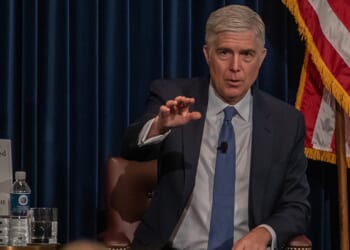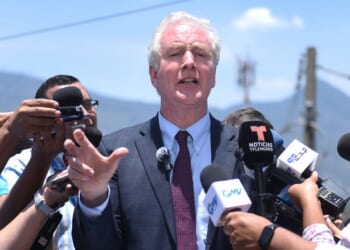Like a semi-active volcano, North Korea presents a constant threat to peace and stability in the region. By deploying some of its most powerful strategic bombers in the area, the Air Force intends to send a message, but also reassure nearby U.S. allies.
At least two U.S. Air Force B-1 Lancer strategic bombers have deployed from Texas to Japan to enhance U.S. deterrence in the region. In addition to the bombers themselves, the bomber task force from the 9th Expeditionary Bomb Squadron includes maintainers and support staff.
The B-1 Lancer is one of the most powerful strategic bombers in the world, and it can carry approximately 75,000 lbs of conventional munitions. In the past, it could also carry nuclear weapons, although it is not currently approved for such loadouts.
B-1 Lancers Reinforce U.S. Deterrence in the Indo-Pacific
“[Bomber Task Force] 25-2 showcases the U.S. commitment to deterring threats and maintaining regional stability,” Air Force Lt. Col. Christopher Travelstead, the director of operations of the 9th Expeditionary Bomb Squadron, said in a press release.
“These missions in the Indo-Pacific ensure our B-1 crews are highly trained and ready to respond anytime, anywhere, to defend U.S. interests and support our allies, securing a stable Indo-Pacific—where all nations operate freely under a rules-based order while promoting global peace and prosperity,” Travelstead added.
The B-1 Lancers will remain in Misawa Air Base, in Japan, for several weeks in support of regional military and diplomatic goals.
“The U.S. remains committed to the shared vision of a secure, free, and prosperous Indo-Pacific region and we will continue to take opportunities to train with Allies and partners to demonstrate interoperability and build lasting relationships,” the Air Force Global Strike Command (AFGSC) stated in a press release.
AFGSC controls the strategic bomber fleet. Composed of B-1 Lancer, B-2 Spirit, and B-52 Stratofortress (and soon B-21 Raider) strategic bombers, the Air Force’s bomber fleet prides itself on the ability to reach and strike any target anywhere in the world. Global Strike Command employs a combination of conventional and stealth aircraft that offer policymakers and military commanders a variety of global strike options.
“These deployments continue the enduring security cooperation with Japan and support our combined capability to quickly and decisively respond to any challenge presented in the Indo-Pacific,” AFGSC stated.
The Air Force Is Preparing for War with North Korea
The Air Force’s B-1 Lancer fleet has been quite active in the Indo-Pacific area of operations lately. In February, for example, a pair of B-1 Lancers deployed to the Korean Peninsula and flew simulated precision strike missions.
Like a semi-active volcano, North Korea presents a constant threat to peace and stability in the region. By deploying some of its most powerful strategic bombers in the area, the Air Force intends to send a message, but also reassure nearby U.S. allies.
Deploying strategic bombers, and other aircraft, in various parts of the world, the Air Force also works on important capabilities. The old adage of “the more you sweat in peace, the less you bleed in war” is still very much true today. The Air Force, at least through its frequent exercises with allies and partner nations around the world, seems to understand that.
About the Author: Stavros Atlamazoglou
Stavros Atlamazoglou is a seasoned defense journalist specializing in special operations and a Hellenic Army veteran (national service with the 575th Marine Battalion and Army HQ). He holds a BA from the Johns Hopkins University and an MA from the Johns Hopkins’ School of Advanced International Studies (SAIS). His work has been featured in Business Insider, Sandboxx, and SOFREP.
Image: Shutterstock / BlueBarronPhoto.
















